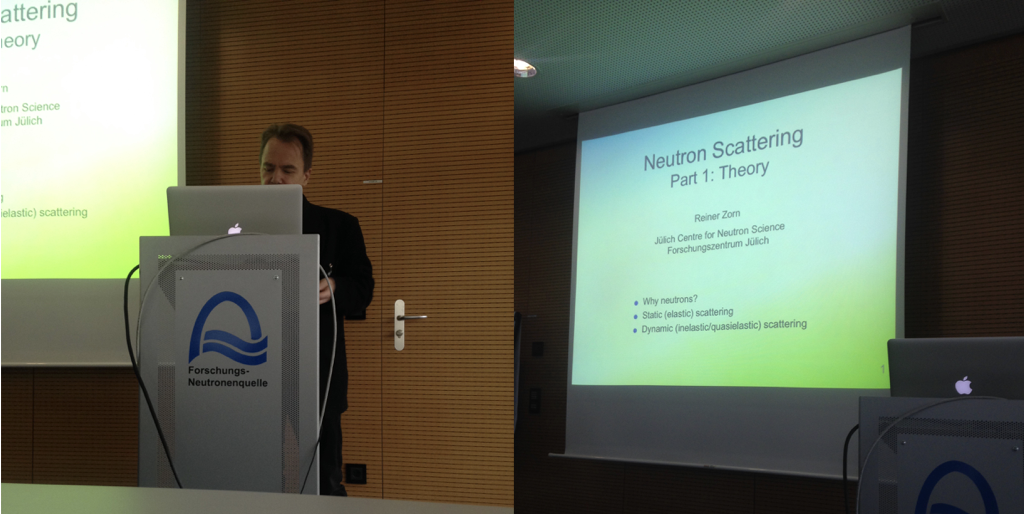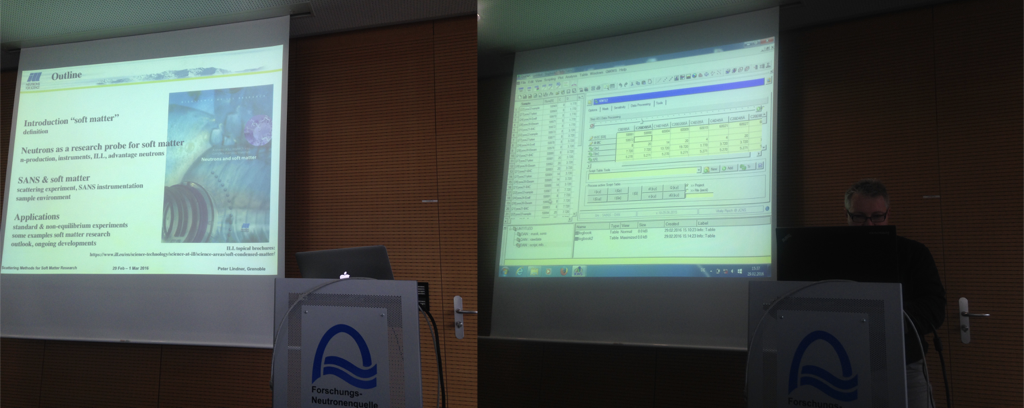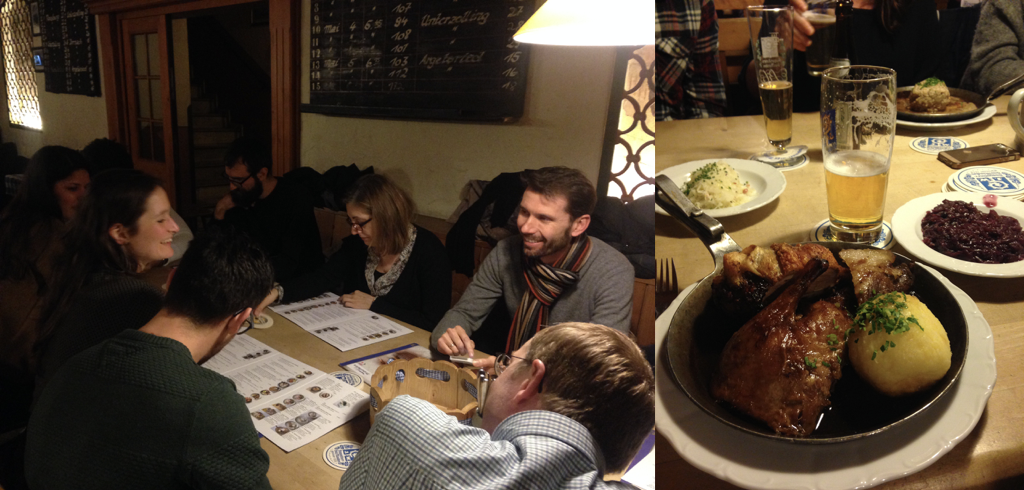The 5th SASSYPOL training module brought us all to Munich, Germany in February 2016. It was hosted by Forschungszentrum Jülich and held at the Technical University of Munich. The principle focus of this module was on Neutron Scattering techniques for Soft Matter. Neutron scattering techniques are of high importance in the characterisation of soft materials. They serve as an approach to investigate the molecular structures of supramolecular soft materials, such as the shape and the organisation of particles or aggregates. If you would like to read more about the use of neutron scattering in the characterisation of soft materials, you can find a comprehensive review here.
Day 1

Day 1 was packed full of lectures from three experts in Neutron Scattering. After an introduction to the facilities and the schedule, Dr Reiner Zorn (Forschungszentrum Jülich) gave us two lectures on the ‘Basics of Neutron Scattering’, the slides from his lectures can be found here, here and here. From a personal point of view, having limited knowledge of the scientific principals behind neutron scattering and the types of systems it has been used to investigate, these lectures provided a strong basis for the training module as a whole.
After a solid lunch in the Max Planck Institute canteen, Dr Peter Lindner from (ILL Grenoble, France) gave us a lecture on ‘Small Angle Neutron Scattering (SANS) for Soft Matter Research’, his slides can be found here. One of the key parts of this lecture was information about the beam time proposal process, which is a necessity to get access to use neutron facilities situated around the world. More information surrounding the main facilities in Europe and their beam time proposal processes can be found below:
- Budapest Neutron Centre, AEKI, Budapest, Hungary
- Berlin Neutron Scattering Center, Helmholtz-Zentrum Berlin, Germany
- Frank Laboratory of Neutron Physics, Joint Institute of Nuclear Research, Dubna, Russia
- FRM-II Research Reactor, Garching, Germany
- Institut Laue Langevin, Grenoble, France
- ISIS Pulsed Neutron and Muon Facility, Rutherford-Appleton Laboratory, Oxfordshire, UK
- JEEP-II Reactor, IFE, Kjeller, Norway
- Laboratoire Léon Brillouin, Saclay, France
- Ljubljana TRIGA MARK II Research Reactor, J. Stefan Institute, Slovenia
- Nuclear Physics Institute (ASCR), Rez nr Prague, Czech Republic
- Reactor Institute Delft, Delft University of Technology, Netherlands
- St. Petersburg Nuclear Physics Institute, Gatchina, Russia
- Swiss Spallation Neutron Source (SINQ), Villigen Switzerland
 The forth lecture of day was given by Dr Aurel Radulescu (Forschungszentrum Jülich). This lecture took the form of a hands on workshop, where the ERs and ESRs got to grips with SANS Data treatment. Following the lectures, it was time for the some research updates from a few of the ER/ESRs.
The forth lecture of day was given by Dr Aurel Radulescu (Forschungszentrum Jülich). This lecture took the form of a hands on workshop, where the ERs and ESRs got to grips with SANS Data treatment. Following the lectures, it was time for the some research updates from a few of the ER/ESRs.
In the evening, we were taken to the Augustiner Bräu München in the centre of Munich. This was a fantastic experience, being a fan of beer it was an environment I thrived in. The food was awesome too and overall, it was a great way for the SASSYPOL ITN to catch up and discuss important scientific matters!
Day 2
In the morning of the second day, we were given a tour of the neutron reactor and beam lines facilities at the Heinz Maier-Leibnitz (FRM II) neutron source.
In the afternoon, we finished the training module with the remaining ER/ESR talks and then it was time to go home (all free from radiation poisoning).


 Saving...
Saving...